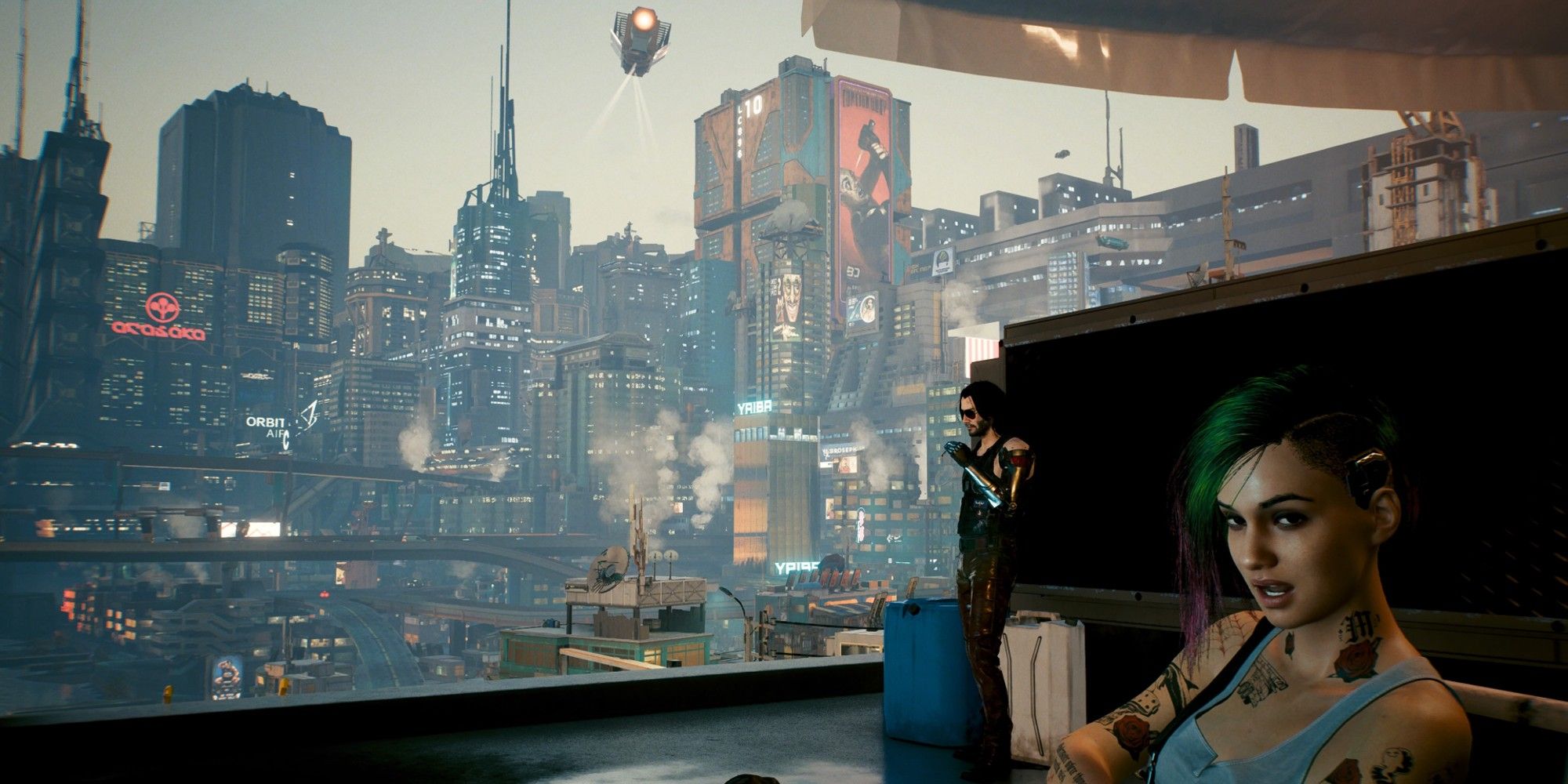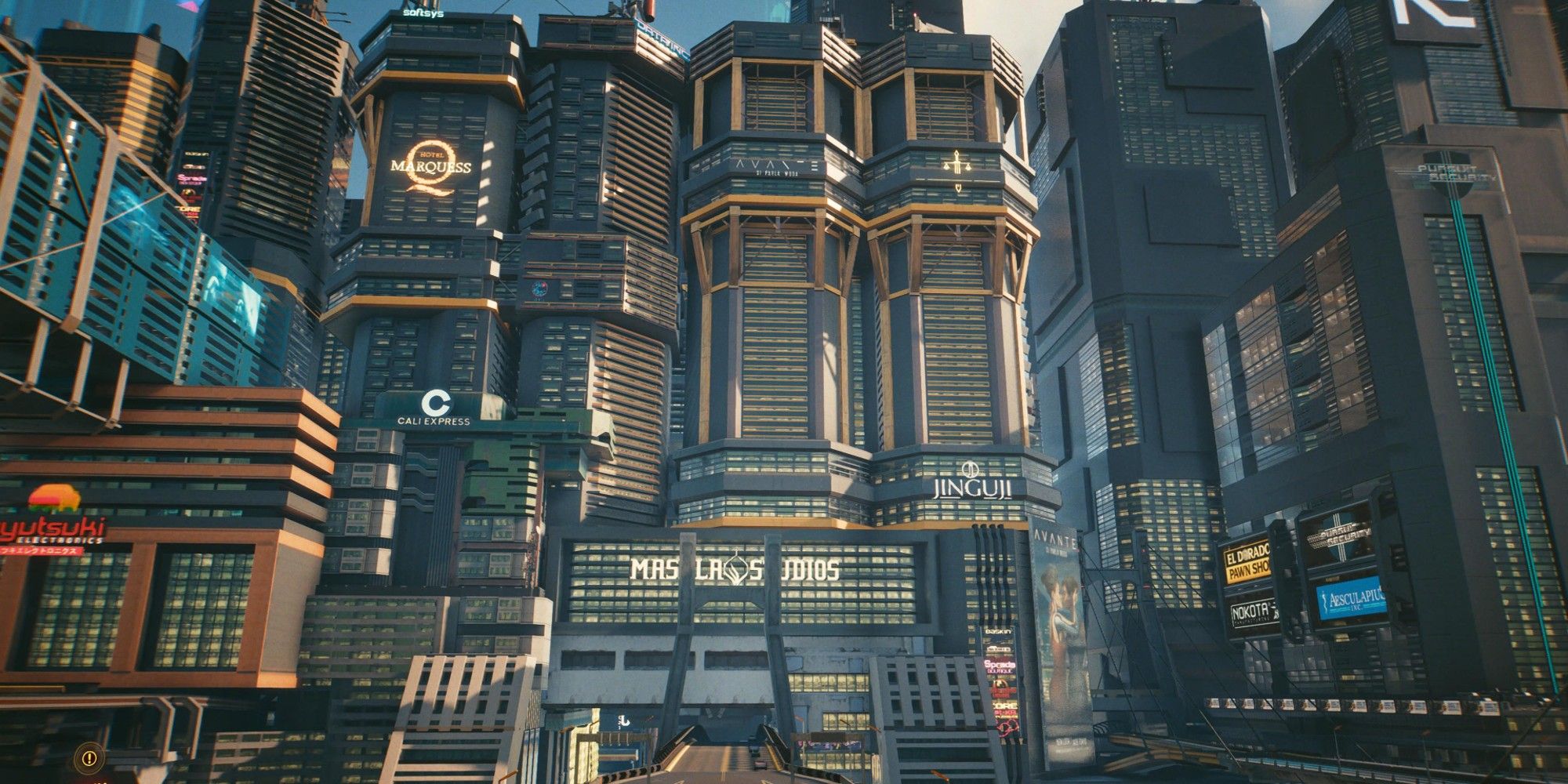My first playthrough of Cyberpunk 2077 was on my 15 inch laptop screen so, now, as I replay it on PS5, I'm often struck by how big Night City is. Not big in the way that most open-world games are big, with sprawling fields, distant mountains, and the expanse of sky overhead. Cyberpunk 2077 is big in the way that a real city can feel big.
As I was driving around Night City recently, I crossed a bridge and was treated to a stunning vista. The concrete stretched out before me, meeting a line of skyscrapers which filled the entirety of my display, horizontally and vertically. There were small pockets of sky at the top of the image, but the rest was all human-made infrastructure. A Yutsuki Electronics sign to the left, a Cali Express sign in the middle, and various megatrons to the right, all hanging from stalk-like buildings stretching up to fill the entirety of the screen. Night City’s vastness suggests endless rooms to explore, and endless people to talk to.
This is the strength that Cyberpunk 2077 has always had; the reason CD Projekt Red was able to stir up so much ravenous pre-release hype. Fans of open-world RPGs are accustomed to much of the space in the world being empty. It’s difficult to build a game the size of a country without plains and prairies and lakes separating the hubs of activity. But a setting like Night City suggests constant activity, because that’s what a real city is like. Instead of seeing a plain stretching out toward the horizon — which can be evocative in its own right — Cyberpunk 2077 has buildings stretching up to the sky. It captures the feeling I often have walking down the sidewalk in Chicago, that I'm at the bottom of a canyon of concrete. And, the walls of that canyon are entirely made up of rooms where people live and work and spend their leisure time. When I stare up at the sky in Night City, my view is often obstructed by bridges and neon signs, skyscrapers and flying cars. Each suggests life.
This is Cyberpunk 2077’s greatest asset, but it’s also the game’s greatest weakness. This asphalt jungle is able to evoke so much through its world and art design and through its imposing, impressive architecture. Seeing all of it from a first-person perspective makes the world feel more overwhelmingly large than cities in other open-world games. Novigrad is big, but the third-person perspective prevents it from feeling all-encompassing. Cyberpunk 2077's world feels like it is boxing you in from all sides. But, outside of the main and side quests, CDPR mostly fails to make its world accessible to the player. Its verticality suggests a densely packed world, as detailed on the interior as it is on the exterior.
But, that suggestion is frequently undercut if you attempt to explore it. As I mentioned in a previous article, Night City is filled with doors (some with open signs next to them) that are not open. You can interact with them, and get a prompt that says they’re locked, but there isn’t a way to go inside. The game stretches upward, seemingly endlessly. But there is no way to reach those heights.


